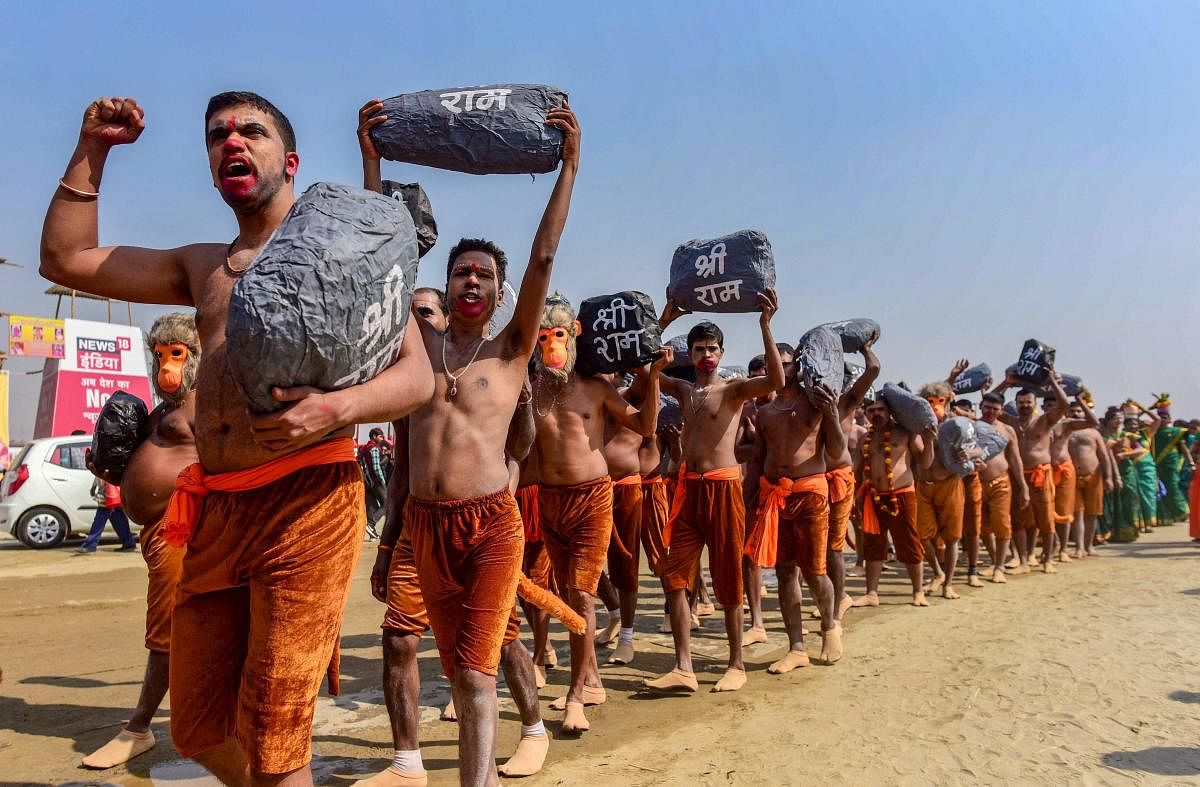
A five-judge Constitution Bench of the Supreme Court, in its first major order, referred the Ayodhya matter to a mediation committee of three members headed by former SC judge Justice FMI Kalifulla, spiritual guru Sri Sri Ravishankar and senior advocate and mediation expert Sriram Panchu. Mediation is always commendable and, as far as possible, litigation should be avoided. But the recourse to mediation is taken at the initial stage, not at the last stage when it has already caused bloodbaths in the past. Besides, the apex court has done a somersault. Former Chief Justice of India Dipak Misra had said the court would deal with it only a case of land dispute, nothing else. But now, the court is of the view that it is much more than that; it is an issue of faith. The volte face is inscrutable. Views change with the change of judge!
There have been attempts at mediation in the past, but they came a cropper. Further, the committee is lopsided, with all the three members being from South India; in fact, all three were born in one state, Tamil Nadu. It may not inspire confidence. Some Muslim leaders have already taken exception to the inclusion of Ravishankar, who had asked Muslims to forgo their claims on the mosque as a “goodwill gesture”, in the committee. He has reportedly also questioned the Supreme Court’s competence to adjudicate on the issue.
Many Hindu organisations have opposed the mediation in unequivocal words. They referred to the judgement of the apex court in Afcons Infrastructure and Others vs Cherian Verkay Construction and Others, in which it held that there would be no reference to mediation in representative suits under Order 1 Rule 8 of the CPC which involve public interest of numerous persons who are not parties before the court. Mediation is possible if both sides are ready for give and take. But most of the stakeholders in this case have taken recalcitrant positions.
It is very clear that the Supreme Court does not want to adjudicate this sensitive issue. It was clear when, in 1994, it returned the reference sent by the President under Article 143 of the Constitution with respect to the Ram Janmabhoomi-Babri Masjid dispute as to whether a temple had once existed at the site in Ayodhya where the Babri Masjid stood later on.
A majority of three judges held that the reference could not be taken as an effective ‘alternate dispute settlement mechanism’. So, it could not be permitted to substitute for the pending suits and legal proceedings. The court felt that the reference had become ‘superfluous and unnecessary’. The two judges (in minority) opined that the court was entitled to decline to answer a reference but then it must give reasons for doing so.
The grounds given by the court for declining to answer the reference were that (a) it favoured one religious community over another, (b) the Union government did not propose to resolve the dispute according to the court’s opinion, rather it just wanted to use it as a springboard for negotiations, (c) the main protagonists on both sides of the dispute had not appeared before the court to lead evidence or for cross-examination, and finally, (d) the process would invite criticism from either or both sides.
The reasoning adduced by the court for returning the reference is baffling as it did so after obtaining an undertaking from the Centre that it would abide by the opinion of the court though the opinion given under Presidential reference is not binding per se. Furthermore, why should the apex court fight shy of giving an opinion just because it may favour one religious community or may be subject to criticism. The same argument has been bandied about now.
An analysis of the litigation over whether or not it was a Ram Mandir or the Babri Masjid that had existed anterior in time at the disputed site in Ayodhya conclusively demonstrates that some suits do remain inconclusive, perhaps forever. In 1949, some primitive images of Hindu gods and goddesses mysteriously appeared in one section of the unused mosque. It triggered a huge controversy, leading to communal frenzy.
The issue went to the district court for the first time on January 13, 1950, when Gopal Singh Visharad filed a suit in the Faizabad court. Many other cases were filed subsequently. All suits were clubbed together and called before the Lucknow Bench of the Allahabad High Court in the representative capacity. The litigation kept hanging and after spawning many political convulsions, the disputed structure was pulled down by obscurantist Hindu activists on December 6, 1992, triggering large-scale communal riots and making a huge impact on the politics of the country.
Ultimately, after a long wait, a three-judge bench of the Allahabad High Court pronounced its verdict on September 30, 2010. It ruled that the 2.77 acres of land be divided into three parts, with one-third going to Ram Lalla (infant Lord Ram) represented by the Hindu Mahasabha for the construction of the Ram temple, one-third going to the Islamic Sunni Waqf Board and the remaining one-third going to the Hindu religious denomination, Nirmohi Akhara.
While the bench was sharply divided over the issue whether the disputed structure had been erected after demolishing a temple, it was unanimous that a temple or a temple structure predated the mosque at the same site. The court relied upon reports of the Archaeological Survey of India (ASI), which carried out excavations, that the predating structure was a massive Hindu religious building.
The question is, what will the apex court do if the mediation fails? The court must show courage and close this chapter for ever. There is a possibility that its judgement may not be obeyed, as happened in Sabarimala, but then it will be the responsibility of the government to enforce it.